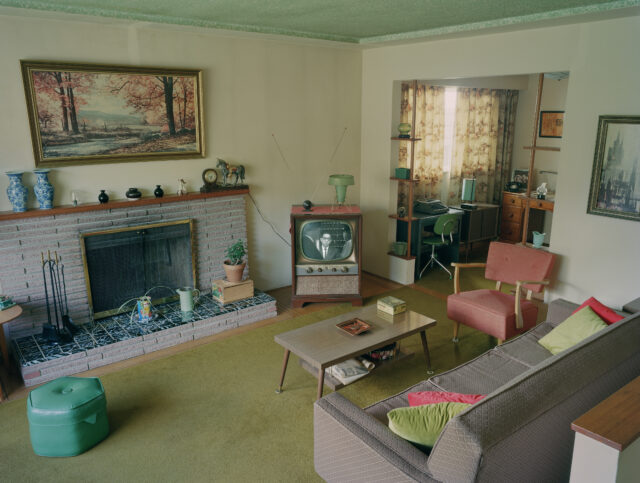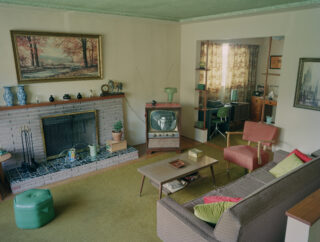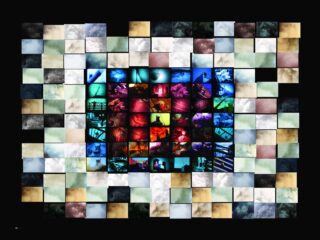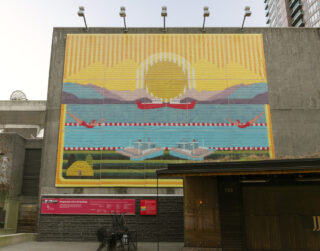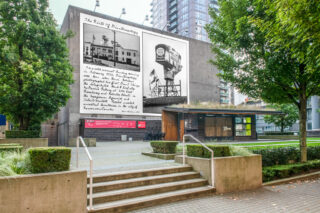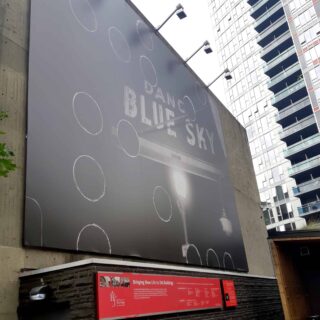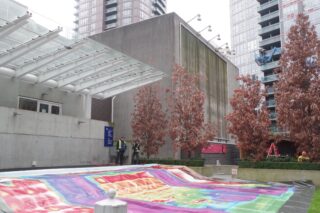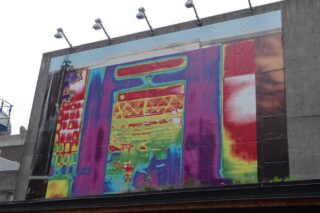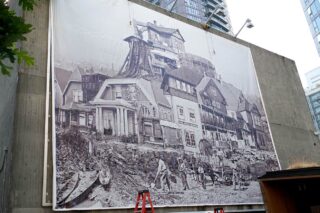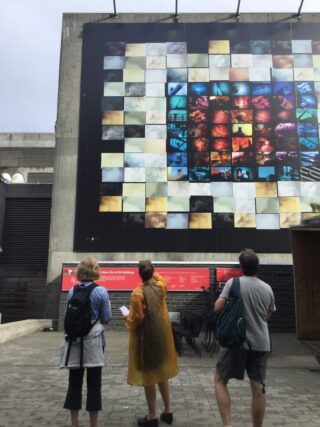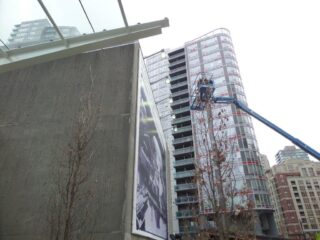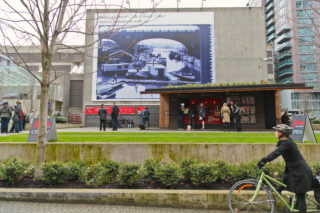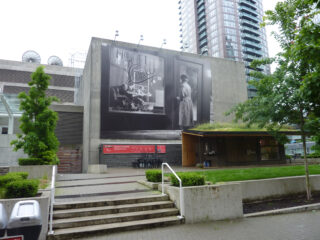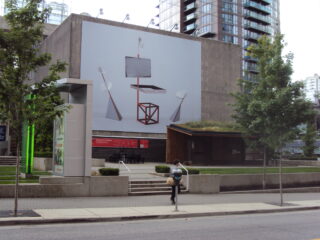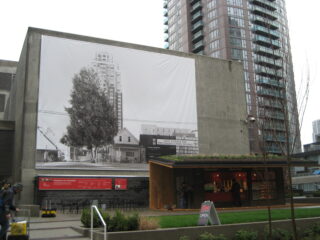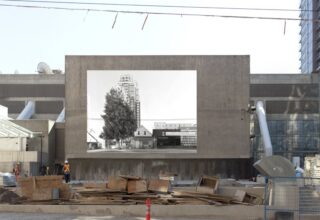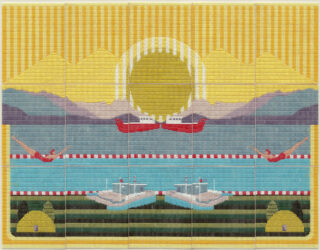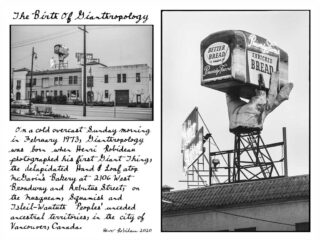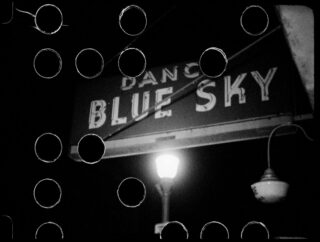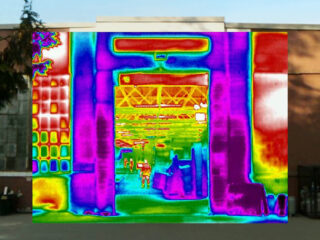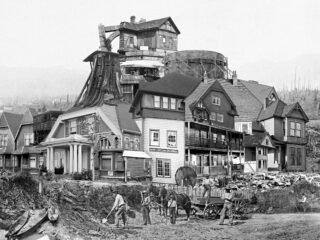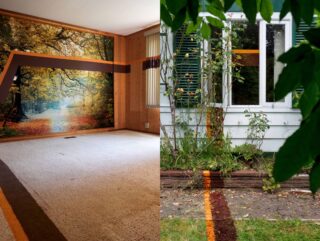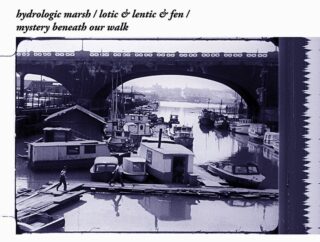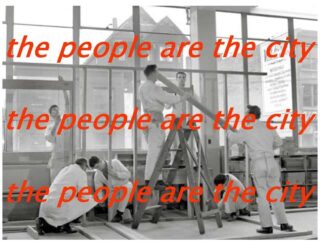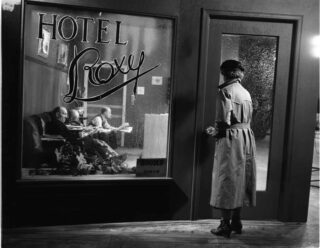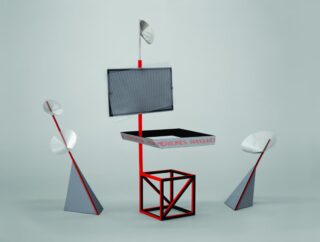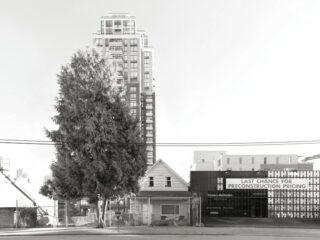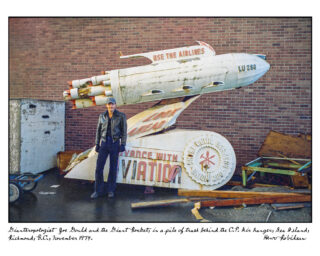Over the past two years, Bowen undertook research in Vancouver to trace a series of intertwined figures who formed an integral part of this city’s Black entertainment community from the 1940s through the 1970s. She mapped a constellation of nightclubs, theatres and hotels where they gathered, many of which have been erased from the city’s physical fabric and collective memory, but exist as traces in archives. Her aim is to posit a powerful counterpoint to common narratives that oversimplify the city’s historical Black presence here.
Night Prowl captures part of a film frame from a CBC news story that aired in October 1959, reporting on the dramatic purging and forced closures of many nightclubs in Vancouver’s ethnically diverse east end. Racially-motivated anxieties around such nightclubs—and the neighbourhoods in which they were situated—fueled the calls for urban renewal that would displace and disperse Black communities in the coming decades. Depicting the marquee of the Blue Sky dance club, its neon light extinguished following the bar’s closure earlier that same month, the image is interrupted by a series of circular voids: visible fragments of batch numbers punched through the cellulose film at its time of manufacture. The holes are a banal artifact found at the end of any film reel, but for Bowen, the ruptured cellulose reminds us of film’s fragile materiality and undermines our ability to trust photography’s seductive promise of “truth”. Considered this way, even blemished and seemingly insignificant documents can be rich repositories for unintended readings, and for questioning who has been charged with writing our histories and why.
About the artist
Deanna Bowen is a Toronto-based artist whose recent exhibitions include the Contemporary Art Gallery, Vancouver; Royal Ontario Museum of Art, Toronto; the Art Museum at the University of Toronto, and the Institute of Contemporary Art, University of Pennsylvania, Philadelphia. She has received several awards most notably Canada Council New Chapter and Ontario Arts Council Media Arts production grants, a 2016 Guggenheim Fellowship and the 2014 William H. Johnson Prize.
